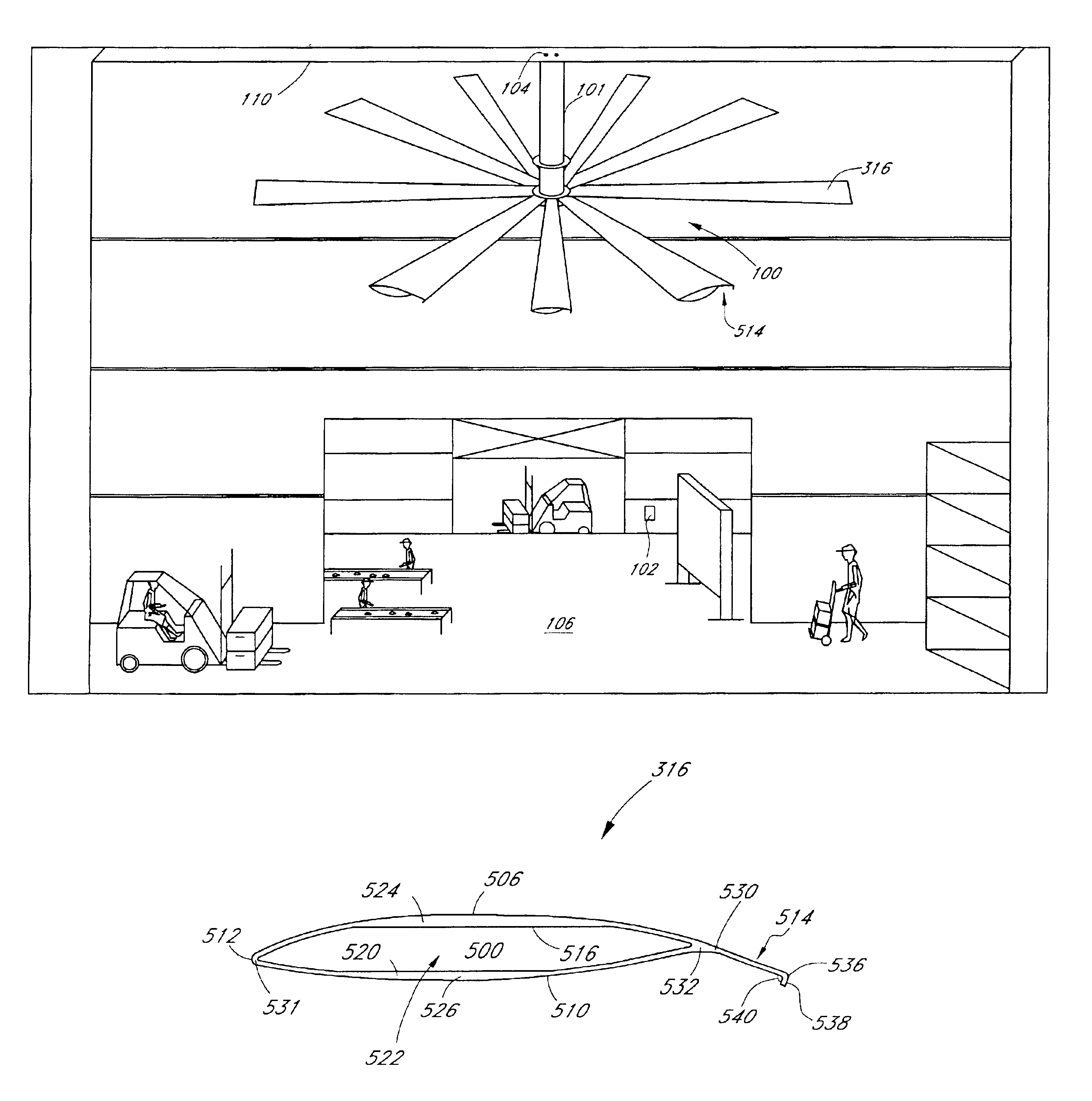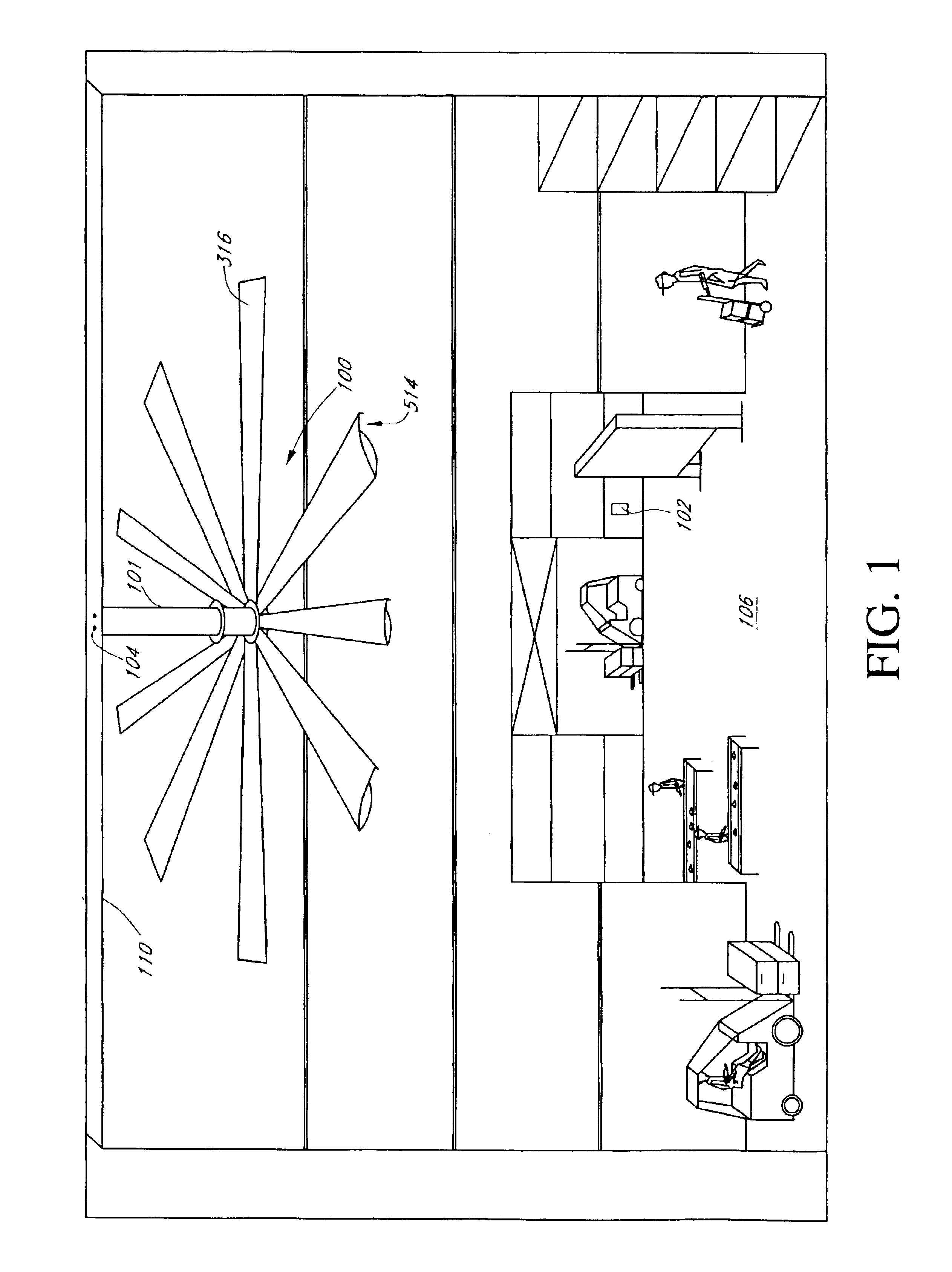Cooling fan with reinforced blade
a cooling fan and reinforced technology, applied in the field of circular devices, can solve the problems of affecting the efficiency of cooling fans, so as to improve the columnar properties of airflow and improve the design of airfoils
- Summary
- Abstract
- Description
- Claims
- Application Information
AI Technical Summary
Benefits of technology
Problems solved by technology
Method used
Image
Examples
Embodiment Construction
[0027]Reference will now be made to the drawings wherein like numerals refer to like parts throughout. FIG. 1 illustrates one embodiment of a fan assembly 100 having a plurality of fan blades 316 with each having a reinforced trailing edge 514 that may be positioned adjacent to the ceiling 110 of a large commercial and / or industrial building 106. In a manner as will be described in greater detail herein below, an extrusion process may be used to form each fan blade 316 with the reinforced trailing edge 514. In one aspect, the occurrence of trailing edge tearing to the fan blade 316 during extrusion may be reduced due to the supporting features of the reinforced trailing edge 514 in a manner that will be described in greater detail herein below.
[0028]The fan assembly 100 may be attached to any suitable pre-existing supporting structure or to any suitable extension connected thereto in an overhead configuration such that the axis of rotation of the fan assembly 100 is along a substant...
PUM
| Property | Measurement | Unit |
|---|---|---|
| width | aaaaa | aaaaa |
| width | aaaaa | aaaaa |
| length | aaaaa | aaaaa |
Abstract
Description
Claims
Application Information
 Login to View More
Login to View More - R&D
- Intellectual Property
- Life Sciences
- Materials
- Tech Scout
- Unparalleled Data Quality
- Higher Quality Content
- 60% Fewer Hallucinations
Browse by: Latest US Patents, China's latest patents, Technical Efficacy Thesaurus, Application Domain, Technology Topic, Popular Technical Reports.
© 2025 PatSnap. All rights reserved.Legal|Privacy policy|Modern Slavery Act Transparency Statement|Sitemap|About US| Contact US: help@patsnap.com



